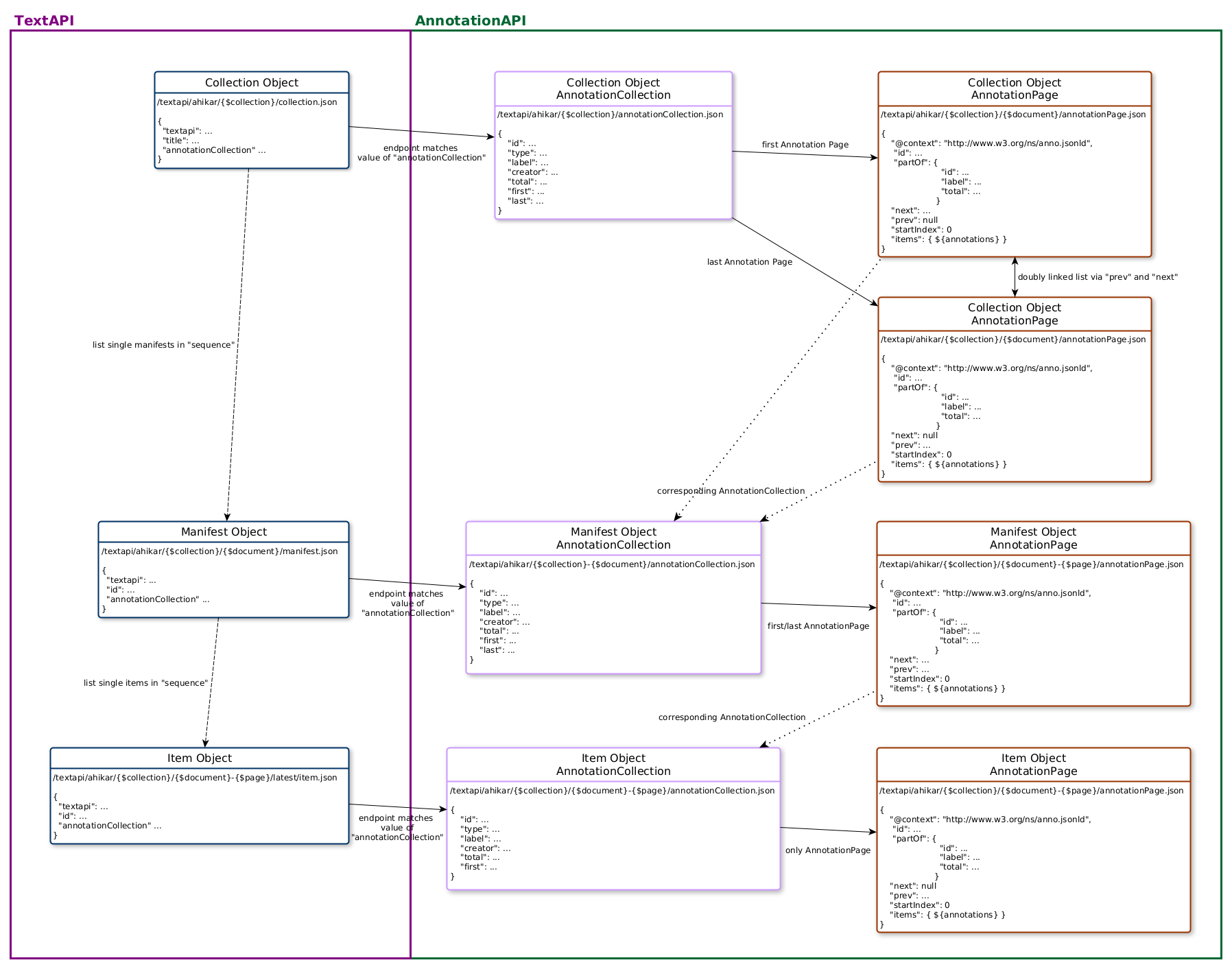Introduction
„Ahiqar“ (short for „The Syriac and Arabic manuscripts of the Ahiqar tradition“) is a project that aims to create a new edition and analysis of the motifs of the Syriac and Arabic manuscripts of the Ahiqar tradition.
The Ahiqar TextAPI
In this project, we explore how we can create a generic TextAPI for the State and University Library and develop a specific derivate for an edition project based on TEI.
The Ahiqar TextAPI is fully compliant to the generic TextAPI and provides some addition as needed. The terminology of the generic TextAPI applies as follows:
- Collection: In Ahiqar, refers to two levels: First it means the main collection of the Ahiqar project which contains the all manuscripts to be edited.
Second, it refers to the language collections,
arabic-karshuniandsyriacwith which the manuscripts are associated. Whilesyriaccorresponds to the Syriac language collection,arabic-karshunicombines the Arabic and the Karshuni language collection. - Manifest: The term „Manifest“ refers to the TextGrid edition object which holds information about the associated XML document as well as the facsimiles.
- Item: „Items“ means pages within an edition in Ahiqar.
These are encoded in
tei:pb/@n.
The Ahiqar AnnotationAPI
For providing annotations we created the AnnotationAPI which is compliant to the W3C Annotation Model, but has several additions to the W3C specification where needed. These are marked with the prefix x-.
Its general design is congruent to the TextAPI, i.e. it assumes a threefold structure of Collections, Manifests, and Items.
Annotation Collections are defined for Collections, Manifests, and Items, whereas Annotation Pages are provided for Manifests and Items only.
Interplay between TextAPI and AnnotationAPI
While the AnnotationAPI is agnostic of the TextAPI, the latter indicates annotations via the annotationCollection field in the respective Collection, Manifest, or Item Object.

Purpose of This Documentation
This document aims to describe in which way its TextAPI differs from the generic one and how its AnnotationAPI is designed, hopefully serving as an example for other projects.